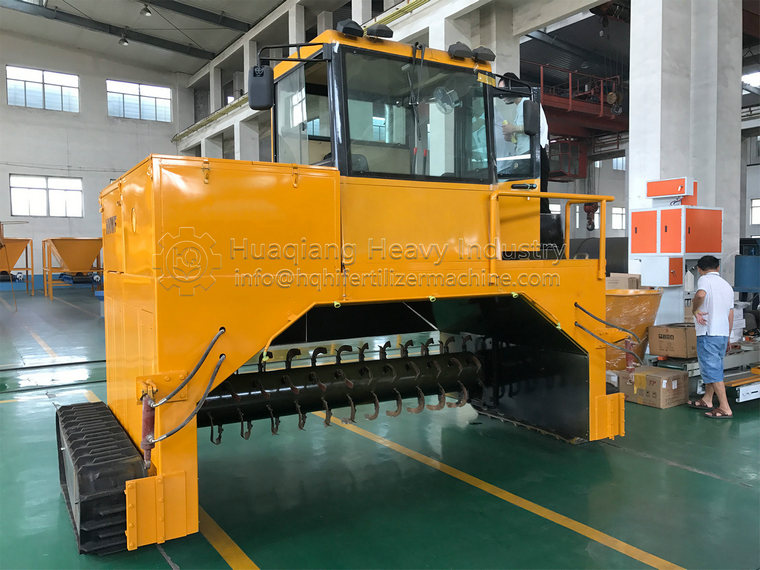More and more farm waste is being utilized through organic fertilizer equipment to achieve waste utilization and turn waste into treasure. In the production process of organic fertilizer, the fermentation process can be completed using various types of organic fertilizer fermentation equipment, such as fermentation tanks and flip throwing machines. The tipping machine is further divided into slot type tipping machines, forklift tipping machines, tracked tipping machines, and so on, each with its own characteristics. Among them, the track type tipping machine is the one that saves civil engineering and human resources more.

The track type tipping machine adopts a four wheel walking design, which can move forward, reverse, and turn, and is driven by one person. During driving, the entire vehicle rides on a pre stacked long strip pile, and the raw materials of the pile are mixed, fluffy, and moved by the rotating blade shaft under the frame. After passing by, the vehicle is tampered with into new strip piles. Operations can be carried out in open spaces or in workshop greenhouses. The outstanding technology of this machine lies in the integration of the crushing function in the later stage of material fermentation. With the gradual dehydration of materials and the installation of crushers, the efficiency of crushing has been greatly improved, costs have been reduced, and the problem of production volume being restricted by crushers has been fundamentally solved. Compared with other types of machines such as "tipping machines," "mixers," and "spiral stirring machines," the stacker has significant characteristics:
1. Specially designed for the process requirements of microbial aerobic fermentation materials, it can effectively mix viscous fermentation materials, microbial fermentation agents, and straw powder. Under this loose material property, fermented materials can be heated up within 45 hours, deodorized in a short period of time, and fertilized in about 12 days. Not only does it have a much faster fermentation speed than deep tank fermentation, but it also effectively prevents the generation of harmful and odorous gases such as hydrogen sulfide, amine gas, and indole during the fermentation process, meeting environmental requirements and producing better organic fertilizers.
2. The overall structure is reasonable, with good rigidity, balanced force, simplicity, safe and reliable performance, easy operation, and strong adaptability to the site. It is composed of a sturdy frame and national standard components, making it easy to use and maintain.